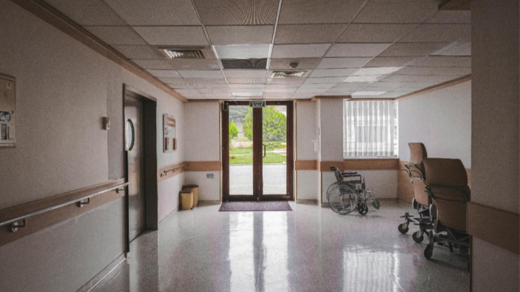
Creating an accessible medical facility is more than meeting regulatory guidelines; it’s about ensuring that every patient feels comfortable, respected, and cared for. Doors, though often overlooked, play a crucial role in how patients move through a space.
When designed thoughtfully, they can make a world of difference in accessibility. This post explores five smart door solutions that enhance patient experiences, accessibility, and convenience.
Medical Facility Door Solutions for Accessibility in Medical Facilities
When supporting individuals with varying needs, accessibility goes beyond aesthetics and space planning. Patients visiting medical facilities may face mobility challenges, temporary injuries, visual impairments, or other conditions.
Ensuring that medical facility door solutions accommodate everyone is a key step in fostering inclusivity and independence. Doors act as gateways to care, privacy, and safety in treatment areas, consultation rooms, and waiting spaces.
Therefore, their design and functionality must be highly inclusive, and employing the right door solutions can address the diverse challenges faced by patients and visitors alike.
Automatic Door Openers
For patients who use wheelchairs, walkers, or crutches, opening traditional doors can be unnecessary friction in their visit. Automatic door openers eliminate this issue entirely. These systems allow doors to open with minimal effort, often activated via motion sensors, push buttons, or touch-free devices such as wave sensors.
Touch-free solutions not only cater to patients with physical disabilities but also enhance hygiene within medical environments by reducing the need for contact with door handles. This is especially valuable in spaces where cleanliness is critical.
Wider Doorways to Welcome Every Patient
The width of doorways might seem like a minor detail, but it can significantly impact accessibility. Narrow doors can make it difficult for individuals in wheelchairs or those carrying large medical equipment to pass through comfortably. Wider doorways create a more accommodating entry point for everyone.
Increasing door widths in high-traffic areas such as main entrances, examination rooms, and treatment areas ensures smoother movement throughout the facility.
Threshold Ramps for Easy Transitions
Leveling changes between rooms or at entrances may pose challenges for individuals with mobility issues. Installing threshold ramps eliminates these barriers. Ramps provide a seamless transition, making it easier for patients using mobility aids to move from one area to another.
These ramps should be thoughtfully integrated to ensure gentle slopes and non-slip surfaces, which reduce risks of trips or falls.
Accessible Door Hardware for Simplicity
Door handles and locks play an important part in creating accessibility, yet they’re often overlooked. Traditional knobs can be difficult for individuals with limited hand strength or fine motor skills to use, while lever handles, on the other hand, require minimal effort.
Lever-style handles are easier to grip and operate, especially for patients with arthritis or other hand conditions. Additionally, doors with push-and-pull designs eliminate the need for turning altogether, providing a straightforward way to enter or exit without additional effort.
Visual Door Cues to Enhance Awareness
For patients with visual impairments, visual cues on doors can be a vital accessibility tool. Proper signage, high-contrast colors, and tactile elements such as braille provide important assistance for finding the right rooms or exits.
Adding clear labels or indicators to every door improves navigation and streamlines the patient experience. By incorporating visual and sensory details, medical facilities convey thoughtfulness, helping patients feel seen and supported throughout their visit.














